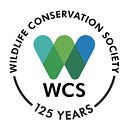WCS 3-Sentence Science
Ethanol Production and Brazil’s Biodiversity
January 16, 2020
Each year, Wildlife Conservation Society scientists publish more than 300 peer-reviewed studies and papers. “WCS 3-Sentence Science” is a regular tip-sheet — in bite sized helpings — of some of this published work.
Here we present work by WCS’s Daniele Baisero on the impact to biodiversity in Brazil due to land use changes like ethanol production and sugarcane cultivation.
- Researchers provided the first indication of biodiversity impacts of increased ethanol demand, and related sugarcane cultivation, in Brazil — which is useful for policy makers and ethanol producers aiming to mitigate impacts.
- Decreased potential species richness due to increased ethanol demand in 2030 was projected for about 19,000 km2 in the Cerrado, 17,000 km2 in the Atlantic Forest, and 7000 km2 in the Pantanal.
- In the Cerrado and Atlantic Forest, the biodiversity impacts of sugarcane expansion were mainly due to direct land-use change; in the Pantanal, they were largely due to indirect land-use change, but overall biodiversity impact of increased ethanol demand was projected to be smaller than the impact of other drivers of land-use change.
Study and Journal: “Biodiversity impacts of increased ethanol production in Brazil” from Land
WCS Co-Author(s): Daniele Baisero, Conservation Solutions
For more information, contact: Stephen Sautner, 718–220–3682, ssautner@wcs.org.
